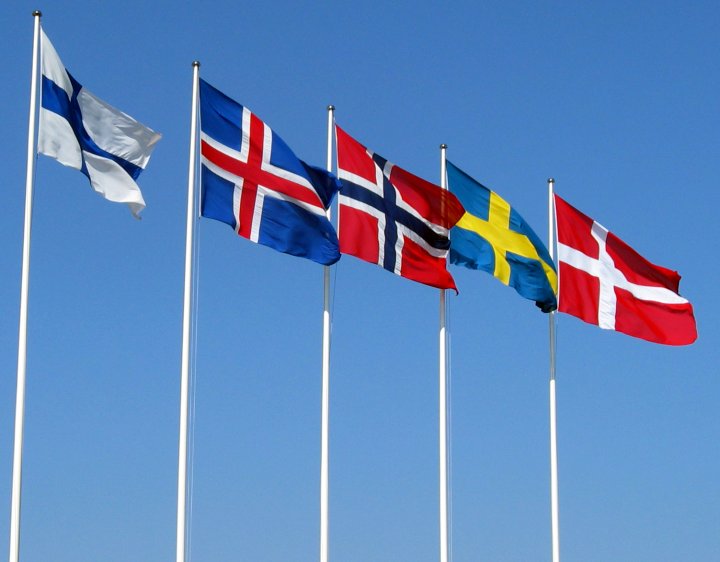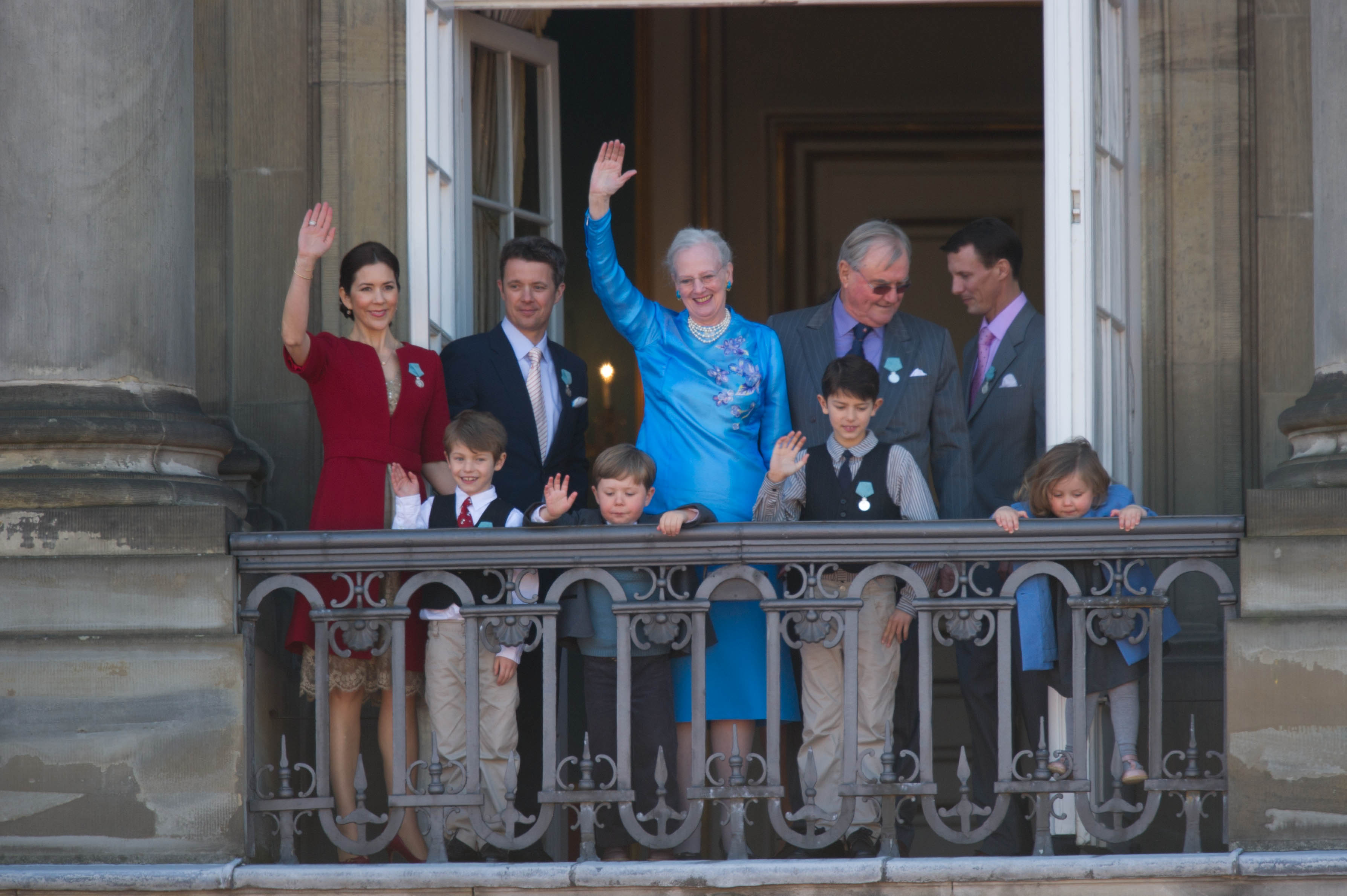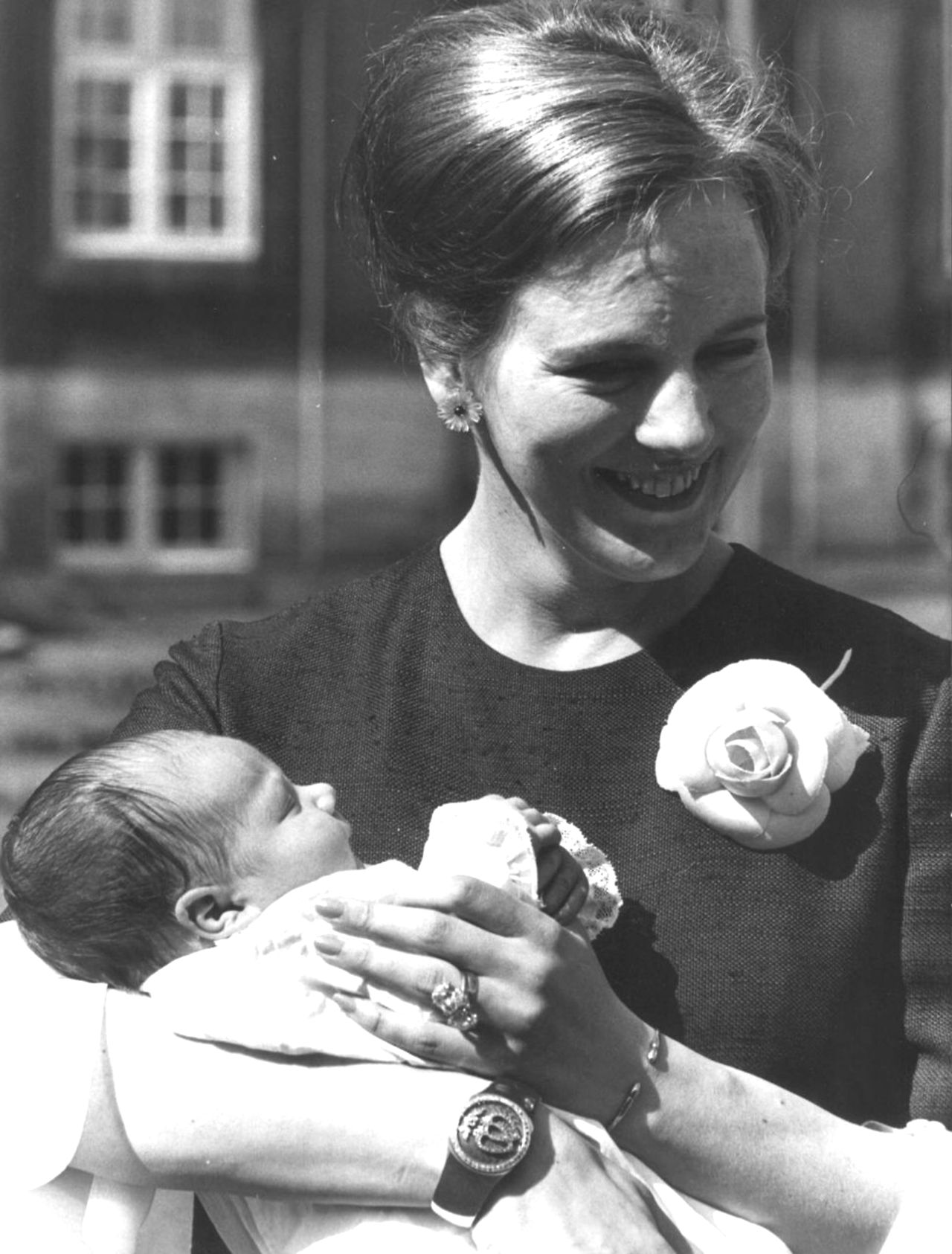|
Nordic Cross
A Nordic cross flag is a flag bearing the design of the Nordic or Scandinavian cross, a cross symbol in a rectangular field, with the centre of the cross shifted towards the hoist. All independent Nordic countries have adopted such flags in the modern period, and while the Nordic cross is named for its use in the national flags of the Nordic nations, the term is used universally by vexillologists, in reference not only to the flags of the Nordic countries but to other flags with similar designs. The sideways cross is also known as the Cross of Saint Philip the Apostle, who preached not in Scandinavia but in Greece, Phrygia and Syria instead. The cross design represents Christianity, and was first seen in the ''Dannebrog'', the national flag of Denmark in the first half of the 13th century. The same design, but with a red Nordic cross on a yellow background, was used as union flag during the Kalmar union (1397 to 1523), and when that union fell apart in 1523 the same design, bu ... [...More Info...] [...Related Items...] OR: [Wikipedia] [Google] [Baidu] |
Flag Terminology
Flag terminology is the nomenclature, or system of terms, used in vexillology, the study of flags, to describe precisely the parts, patterns, and other attributes of flags and their display. Flag types Flag elements Basic patterns Flags often inherit traits seen in traditional European heraldry designs and as a result patterns often share names. Techniques in flag display Illustrations Flag illustrations generally depict flags flying from the observer's point of view from left to right, the view known as the obverse (or "front"); the other side is the reverse (or "back"). There are some exceptions, notably some Islamic flags inscribed in Arabic, which is written from right to left; for these the obverse is defined as the side with the hoist to the observer's right. See also * Vexillological symbol Notes References External links * {{Vexillology Vexillology Vexillology V ... [...More Info...] [...Related Items...] OR: [Wikipedia] [Google] [Baidu] |
State Flag
In vexillology, a state flag is either the flag of the government of a sovereign state, or the flag of an individual federated state (subnational administrative division). Government flag A state flag is a variant of a national flag (or occasionally a completely different design) specifically designated and restricted by law or custom (theoretically or actually) to use by a country's government or its agencies. For this reason, they are sometimes referred to as ''government flags''. In many countries the state flag and the civil flag (as flown by the general public) are identical, but in other countries, notably those in Latin America, central Europe, and Scandinavia, the state flag is a more complex version of the national flag, often featuring the national coat of arms or some other emblem as part of the design. Scandinavian countries also use swallowtailed state flags, to further differentiate them from civil flags. In addition, some countries have state ensigns, separate ... [...More Info...] [...Related Items...] OR: [Wikipedia] [Google] [Baidu] |
Flag Of Finland
The flag of Finland ( fi, Suomen lippu, sv, Finlands flagga), also called ' ("Blue Cross Flag"), dates from the beginning of the 20th century. On a white background, it features a blue Nordic cross, which represents Christianity. The state flag has a coat of arms in the centre but is otherwise identical to the civil flag. The swallow-tailed state flag is used by the military. The presidential standard is identical to the swallow-tailed state flag but also has in its upper left corner the Cross of Liberty after the Order of the Cross of Liberty, which has the president of Finland as its grand master. Like Sweden's, Finland's national flag is based on the Scandinavian cross. It was adopted after independence from Russia, when many patriotic Finns wanted a special flag for their country, but its design dates back to the 19th century. The blue colouring is said to represent the country's thousands of lakes and the sky, with white for the snow that covers the land in winter. T ... [...More Info...] [...Related Items...] OR: [Wikipedia] [Google] [Baidu] |
Faroe Islands
The Faroe Islands ( ), or simply the Faroes ( fo, Føroyar ; da, Færøerne ), are a North Atlantic archipelago, island group and an autonomous territory of the Danish Realm, Kingdom of Denmark. They are located north-northwest of Scotland, and about halfway between Norway ( away) and Iceland ( away). The islands form part of the Kingdom of Denmark, along with mainland Denmark and Greenland. The islands have a total area of about with a population of 54,000 as of June 2022. The terrain is rugged, and the Oceanic climate#Subpolar variety (Cfc), subpolar oceanic climate (Cfc) is windy, wet, cloudy, and cool. Temperatures for such a northerly climate are moderated by the Gulf Stream, averaging above freezing throughout the year, and hovering around in summer and 5 °C (41 °F) in winter. The northerly latitude also results in perpetual civil twilight during summer nights and very short winter days. Between 1035 and 1814, the Faroe Islands were part of the Kingdo ... [...More Info...] [...Related Items...] OR: [Wikipedia] [Google] [Baidu] |
Flag Of The Faroe Islands
The flag of the Faroe Islands (in faroese: ''Merkið'') is an offset cross, representing Christianity. It is similar in design to other Nordic flags – a tradition set by the '' Dannebrog'' of Denmark, of which the Faroe Islands are an autonomous territory.* * * The flag is called ''Merkið'', which means "the banner" or "the mark". It resembles the flags of neighbouring Norway and Iceland. Description and symbolism The design of the flag incorporates a red Nordic cross, which is offset to the left. The red cross is fimbriated azure and is set on a white field. The flag design closely resembles that of the Norwegian flag, with the fimbriated cross. White symbolises the creators of the flag, the foam of the sea and the pure, radiant sky of the Faroe Islands, while the old Faroese blue and red colours are reminiscent of other Scandinavian and Nordic flags, representing the Faroe Islands' bonds with other Nordic countries.Smith/Neubecker: Wappen und Flaggen aller Nation ... [...More Info...] [...Related Items...] OR: [Wikipedia] [Google] [Baidu] |
Danish Royal Family
The Danish royal family is the dynastic family of the monarch. All members of the Danish royal family except Queen Margrethe II hold the title of ''Prince/Princess of Denmark''. Dynastic children of the monarch and of the heir apparent are accorded the style of ''His/Her Royal Highness'', while other members of the dynasty are addressed as ''His/Her Highness''. The Queen is styled ''Her Majesty''. The Queen, her siblings and her descendants belong to the House of Glücksburg, which is a branch of the Royal House of Oldenburg. The Queen's children and male-line descendants also belong agnatically to the family de Laborde de Monpezat, and were given the concurrent title ''Count/Countess of Monpezat'' by royal decree on 30 April 2008. The Danish royal family receives remarkably high approval ratings in Denmark, ranging between 82% and 92%. Main members The Danish royal family includes: * The Queen (the monarch) ** The Crown Prince and Crown Princess (the Queen's son an ... [...More Info...] [...Related Items...] OR: [Wikipedia] [Google] [Baidu] |
Frederik, Crown Prince Of Denmark
Frederik, Crown Prince of Denmark, Count of Monpezat, (Frederik André Henrik Christian; born 26 May 1968) is the heir apparent to the Danish throne. He is the elder son of Queen Margrethe II and Prince Henrik. Early life Crown Prince Frederik was born at Rigshospitalet the Copenhagen University Hospital in Copenhagen, on 26 May 1968, to the then Princess Margrethe, oldest daughter of Frederick IX and heir presumptive to the Danish throne, and Prince Henrik. At the time of his birth, his maternal grandfather was on the throne of Denmark and his matrilineal great-grandfather was on the throne of Sweden. He was christened on 24 June 1968, at Holmen Church, in Copenhagen. He was named Frederik for his maternal grandfather, King Frederick IX, continuing the Danish royal tradition of the heir apparent being named either Frederick or Christian. His middle names honour his paternal grandfather, André de Laborde de Monpezat; his father, Prince Henrik; and his maternal great ... [...More Info...] [...Related Items...] OR: [Wikipedia] [Google] [Baidu] |
Ensign
An ensign is the national flag flown on a vessel to indicate nationality. The ensign is the largest flag, generally flown at the stern (rear) of the ship while in port. The naval ensign (also known as war ensign), used on warships, may be different from the civil ensign (merchant ships) or the yacht ensign (recreational boats). Large versions of naval ensigns called battle ensigns are used when a warship goes into battle. The ensign differs from the jack, which is flown from a jackstaff at the bow of a vessel. In its widest sense, an ensign is just a flag or other standard. The European military rank of ensign, once responsible for bearing a unit's standard (whether national or regimental), derives from it (in the cavalry, the equivalent rank was cornet, named after a type of flag). Ensigns, such as the ancient Roman ensigns in the Arch of Constantine, are not always flags. National ensigns In nautical use, the ensign is flown on a ship or boat to indicate its organizat ... [...More Info...] [...Related Items...] OR: [Wikipedia] [Google] [Baidu] |
Sweden
Sweden, ; fi, Ruotsi; fit, Ruotti; se, Ruoŧŧa; smj, Svierik; sje, Sverji; sju, Sverje; sma, Sveerje or ; yi, שוועדן, Shvedn; rmu, Svedikko; rmf, Sveittiko. formally the Kingdom of Sweden, is a Nordic countries, Nordic country located on the Scandinavian Peninsula in Northern Europe. It borders Norway to the west and north, and Finland to the east. At , Sweden is the largest Nordic country and the List of European countries by area, fifth-largest country in Europe. The Capital city, capital and largest city is Stockholm. Sweden has a population of 10.5 million, and a low population density of ; around 87% of Swedes reside in urban areas in the central and southern half of the country. Sweden’s urban areas together cover 1.5% of its land area. Because the country is so long, ranging from 55th parallel north, 55°N to 69th parallel north, 69°N, the climate of Sweden is diverse. Sweden has been inhabited since Prehistoric Sweden, prehistoric times, . T ... [...More Info...] [...Related Items...] OR: [Wikipedia] [Google] [Baidu] |
Norway
Norway, officially the Kingdom of Norway, is a Nordic country in Northern Europe, the mainland territory of which comprises the western and northernmost portion of the Scandinavian Peninsula. The remote Arctic island of Jan Mayen and the archipelago of Svalbard also form part of Norway. Bouvet Island, located in the Subantarctic, is a dependency of Norway; it also lays claims to the Antarctic territories of Peter I Island and Queen Maud Land. The capital and largest city in Norway is Oslo. Norway has a total area of and had a population of 5,425,270 in January 2022. The country shares a long eastern border with Sweden at a length of . It is bordered by Finland and Russia to the northeast and the Skagerrak strait to the south, on the other side of which are Denmark and the United Kingdom. Norway has an extensive coastline, facing the North Atlantic Ocean and the Barents Sea. The maritime influence dominates Norway's climate, with mild lowland temperatures on the ... [...More Info...] [...Related Items...] OR: [Wikipedia] [Google] [Baidu] |
Iceland
Iceland ( is, Ísland; ) is a Nordic island country in the North Atlantic Ocean and in the Arctic Ocean. Iceland is the most sparsely populated country in Europe. Iceland's capital and largest city is Reykjavík, which (along with its surrounding areas) is home to over 65% of the population. Iceland is the biggest part of the Mid-Atlantic Ridge that rises above sea level, and its central volcanic plateau is erupting almost constantly. The interior consists of a plateau characterised by sand and lava fields, mountains, and glaciers, and many glacial rivers flow to the sea through the lowlands. Iceland is warmed by the Gulf Stream and has a temperate climate, despite a high latitude just outside the Arctic Circle. Its high latitude and marine influence keep summers chilly, and most of its islands have a polar climate. According to the ancient manuscript , the settlement of Iceland began in 874 AD when the Norwegian chieftain Ingólfr Arnarson became the first ... [...More Info...] [...Related Items...] OR: [Wikipedia] [Google] [Baidu] |



